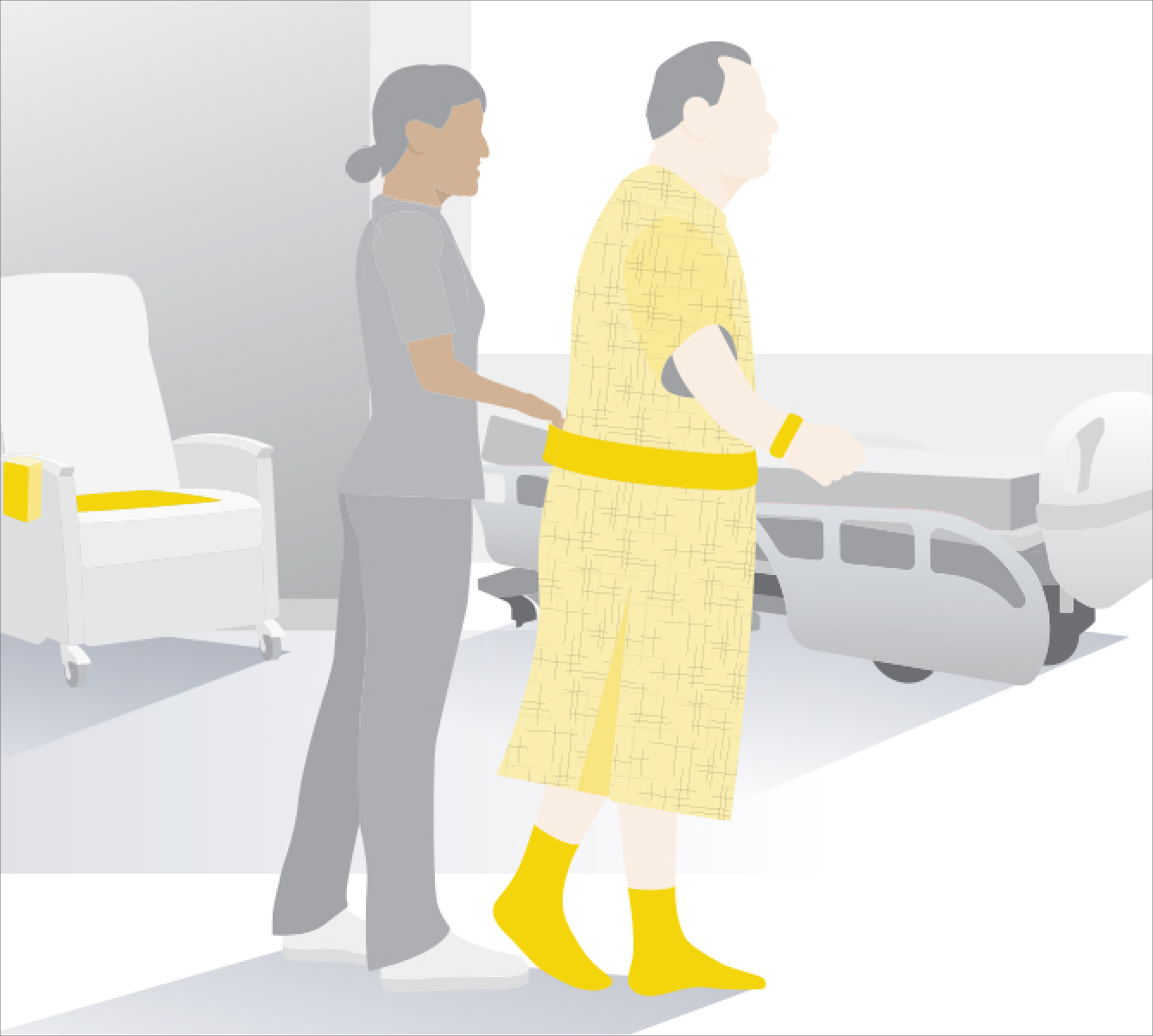Elevating patient safety with gait belts

Mobilizing patients, keeping them safe and avoiding injury is something that all caregivers strive to do. Early and consistent mobilization positively affects patient outcomes and helps prevent the negative effects of immobility. By not utilizing the correct tools or equipment when mobilizing patients, caregivers run the risk of injuring themselves. Patients are also at risk for falling if their mobility level isn’t correctly determined before ambulation.
A nursing-driven progressive mobility protocol will help nursing staff identify the patient’s mobility level, as well as the appropriate tools and resources to safely mobilize them. A good example of a safe patient handling tool that aids in patient mobilization and transfers is a gait belt1. Gait belts can safely help lower patients to the ground if they begin to fall or lose balance when ambulating.
Before using a gait belt to abulate patients, check for contraindications like, hernias, G-tubes and others.
Before ambulating a patient with a gait belt, the patient’s mobility status needs to be determined. To avoid syncope or orthostatic hypotension, the caregiver should start by asking the patient to complete a series of small movements. Begin by having the patient elevate their head of bed or slowly sit up in bed. If the patient is able to withstand this first stage of movement, the caregiver should observe the patient’s strength and head control in a seated position. If the patient is able to independently maintain a seated position, have the patient dangle their legs off the bed while holding on to the side rail. To determine a patient’s lower body strength, have them straighten their legs and complete leg raises. If the patient is able to complete all of these interventions, they are ready to get up and moving.
Some patients have contraindications that prevent them from utilize a gait belt, including: recent chest, abdominal or back surgery, abdominal aneurysm, G-tubes, hernias and severe cardiac or respiratory conditions.
Gait belts are made of either cloth or plastic and have a buckle that can securely fasten around the patient’s waist. Before applying the gait belt to the patient, it should be inspected to make sure that the buckle is intact and that the belt is not broken in any way.
Gait belts should only be used to assist in ambulating—never for lifting.
How to use a gait belt when ambulating:
- Ensure the patient is wearing non-skid slippers or footwear.
- Place the gait belt around the patient’s waist—making sure it’s not too loose or too tight before buckling.
- Face the patient and grab both sides of the gait belt using an underhand grip.
- Widen your stance, bend your knees and firmly grasp the gait belt, instructing the patient to push off of the bed after you count to three.
- Let the patient stand to maintain thier equilibrium and balance.
- If transferring the patient to the chair, allow the patient to pivot and help guide them to the chair. Have the patient slowly lower down to the chair while you hold onto the gait belt and the patient holds on to the side of the chair.
- If ambulating, place one hand on the gait belt on the back of the patient.
Gait belts should never be used to lift patients. They should only be used to assist a patient when ambulating. If you need to lift a patient, use proper safe patient handling equipment, like lifts or repositioning devices.
Want to do more keep your patients safe? Explore our falls management products to learn how.
References:
1. U.S. Department of Labor, Occupational Safety and Health Administration. (2003, revised 2009). “Guidelines for nursing homes: Ergonomics for the prevention of musculoskeletal disorders” https://www.osha.gov/sites/default/files/publications/final_nh_guidelines.pdf